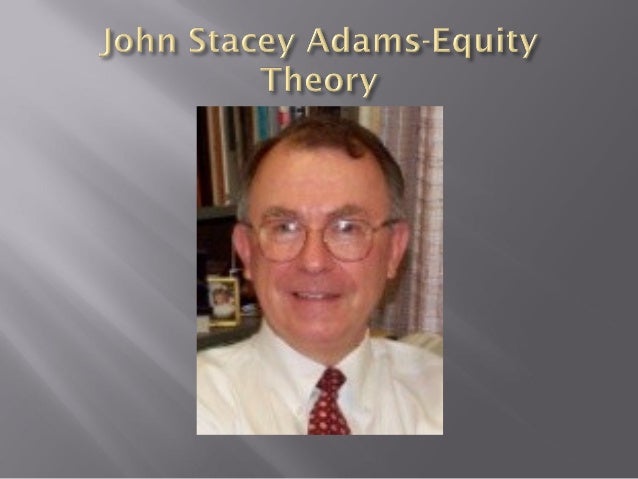

The first proposition is that people will attempt to maximize outcomes (where an outcome equals reward minus punishment). The essential structure of Equity Theory is that it consists of four interdependent, or interlocking, propositions. His research indicates that people who discover that they are in an inequitable relationship attempt to reduce their resultant distress by restoring either “actual” or “psychological/perceived” equity to their relationship (Adams, 1965). To further understand the impact that motivation has on today’s organizations, it is important to examine some of the more contemporary theories such as the equity and expectancy theories posited by Adams and Vroom.Īdams (1965) developed a theory on motivation to attempt to explain behavior influenced by the norm of equity (Lane, Irving M. At the very least, the research related to motivation provides a foundation on which managers can build on (to motivate staff). It is not surprising that their theories are vigorously studied and applied by businesses looking to improve motivation as a means to increase productivity. The collective works of the major researchers in motivation theory hold validity in their own right. On the other hand, motivators such as recognition, achievement, and advancement can either have a positive or negative effect on individual attitudes. However, is required to avoid dissatisfaction. An example of a hygiene factor is pay, which alone is not cause for satisfaction. According to Herzberg (1966), maintenance (or hygiene factors) need to be met to avoid dissatisfaction but do not motivate by themselves (Bowman, 2010). Alderfer posited that these three levels of human needs are not the same for everyone and that the importance of each category may vary for each individual (Alderfer, 1969).Ĭonversely, Herzberg proposed two factors influencing motivation at work ( hygiene factors and motivators). Like Maslow, Alderfer recognized that basic human needs have to be met in order to progress and satisfy higher order needs. Alderfer’s ERG theory paralleled that of Maslow. In a reaction to Maslow’s Hierarchy of Needs, Clayton Alderfer distinguished three categories of human needs that influence worker’s behavior existence, relatedness, and growth (Bowman, 2010). However, he recognized that not all personalities followed his proposed hierarchy. Maslow considered the myriad of personality dimensions related to motivational needs (Huitt, 2007). These needs are placed in a hierarchy and suggest that before a more sophisticated, “higher order” need can be met, certain primary needs must first be satisfied (Bowman, 2010).

(1981) –whose work is still taught to business students today (Bassett-Jones et al., 2005).Ībraham Maslow (1954) attempted to synthesize a large body of research related to human motivation (Huitt, 2007) and posited a hierarchy of five basic motivational needs: physiological, safety, love and belongingness, esteem, and self-actualization. The major researchers into motivation were Maslow (1954), Herzberg et al.(1959), Vroom (1964), Alderfer (1972), McClelland (1961) and Locke et al. As such, there is a wealth of research available on the concept of motivation and its influence on human behavior. No matter what the cause, it is safe to say that what motivates one will not necessarily motivate another. This motivation or drive can be caused by intrinsic desires to succeed, or external factors such as recognition, status, or monetary gain. The purpose of this paper is to provide a comparative analysis of these two theories in particular and to discuss the implications each has on managers in an increasingly global market.Įach individual on this planet is driven by something. Theories such as John Stacy Adams’ Equity theory and Victor Vroom’s’ Expectancy theory have substantial relevance in understanding motivation in today’s complex work environment. In today’s business environment, the application of more contemporary theories of motivation have been brought to light. The results of which have been tested in practice by manager’s who seek to improve productivity, performance, and motivation of their employees. Many theorists (such as Maslow, Herzberg, McGregor, and McClelland) have contributed significant research on human behavior in efforts to gain better insight on the impact motivation has on human performance. Psychologists have sought to discover exactly how motivation is influenced.

Motivation plays an important role in predicting the success of individuals and their ability to perform in the workplace.


 0 kommentar(er)
0 kommentar(er)
